Many people are becoming more conscious about the thermal performance of their homes, and how that can impact the value of their home, along with the rising gas and electricity prices. It is essential to ensure your house performs well, both in the summer and winter to maximise savings. Two significant factors to consider to increase thermal performance is; increased insulation and sealing any air leaks. Improving these areas will reduce heat loss in winter and also heat gain in summer. This results in huge savings on energy bills and carbon emissions.
Adequate insulation is essential for walls, ceiling and floors, however insulation in windows is not often considered. When considering windows, 25-35% of heat enters into buildings in summer, 10-20% of heat is lost in winter. Increasing the insulation in windows can be achieved with an additional glass pane, through either; a double glazed window unit or secondary glazing.
Air leakage in buildings through heat loss accounts for 5-25% in summer and 15-25% in winter. These can be found in walls, ceilings, floors, ducts, fire places, plumbing penetrations in addition to windows and doors. Locating and blocking these draughts is an easy way to save money.
Summer Heat Gain
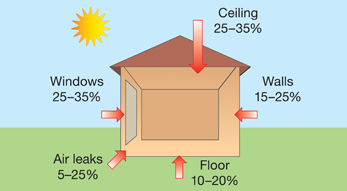
Winter Heat Loss
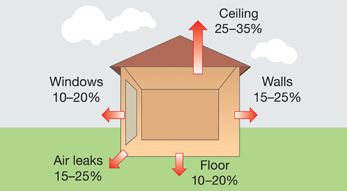
Images sourced from sa.gov.au
Many people believe that all double glazing is the same, but unfortunately that isn’t the case. Many factors can separate a great product from a poor one. Some of these factors include the performance of the glass and frame, along with how the product seals when closed. Inferior products have air leaks, and allow a lot of heat to travel through the glass and even through the frame.
One way to examine the performance of your home is through a thermal imaging camera. It works by rendering infrared radiation (heat) into a visible image. This image can be displayed in various ways. However, it is generally identified in either a ‘rainbow’ or ‘iron’ image, where hotter objects display a brighter colour, and alternatively, colder objects display a darker colour.
The use of the thermal camera can also determine if a product is working effectively, and windows are a perfect example of this. Air leaks are very common with inferior products on the market, and installation can be a big contributor to this issue. If draughts occur around the window, it can be from movement in the house, weathering of windows or cladding, or even poor installation.
If draughts enter through the operable sash, then there are likely no rubber seals or no compression locks holding the sash firmly in place, or the window is not properly adjusted.
UPVC FRAMES EXAMPLES
Cold External – Inferior uPVC Double Glazed Window
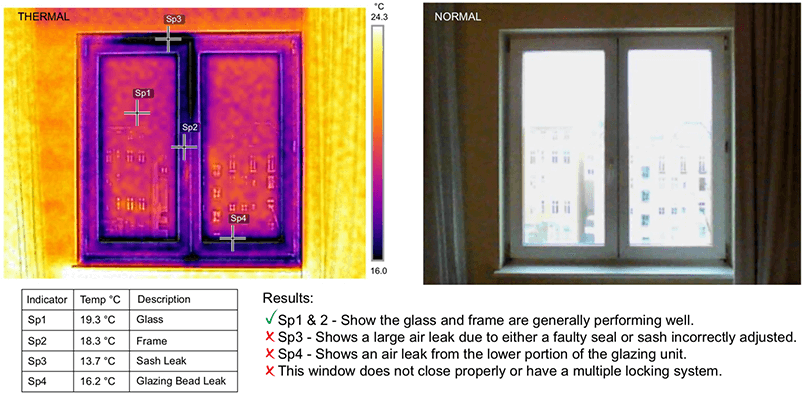
Cold External – Inferior uPVC Double Glazed Door
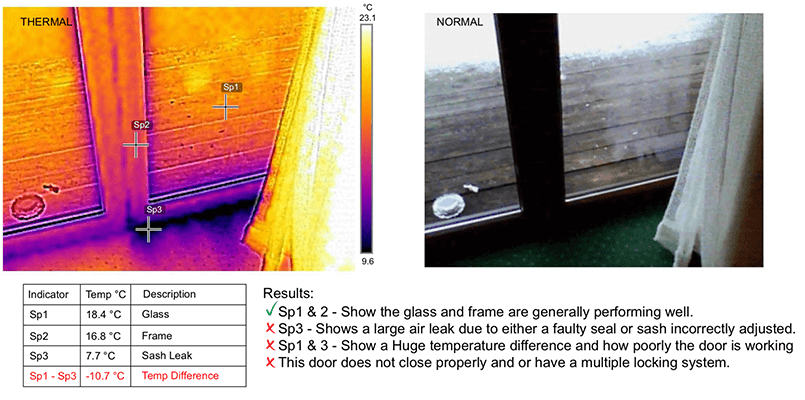
Hot External – Oknalux uPVC Double Glazed Window
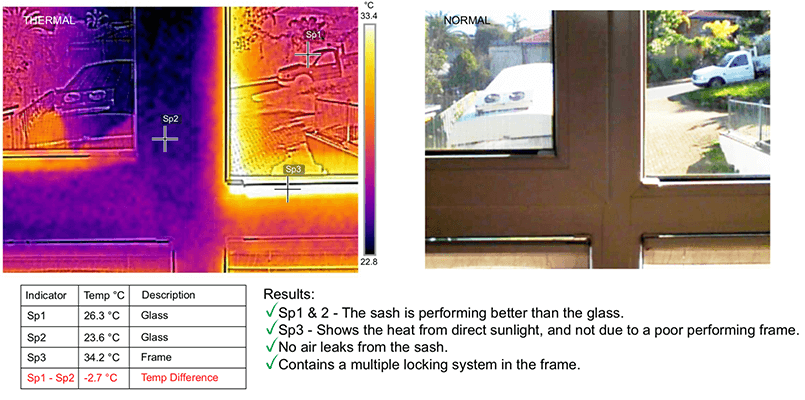
Hot External – Oknalux uPVC Double Glazed Door
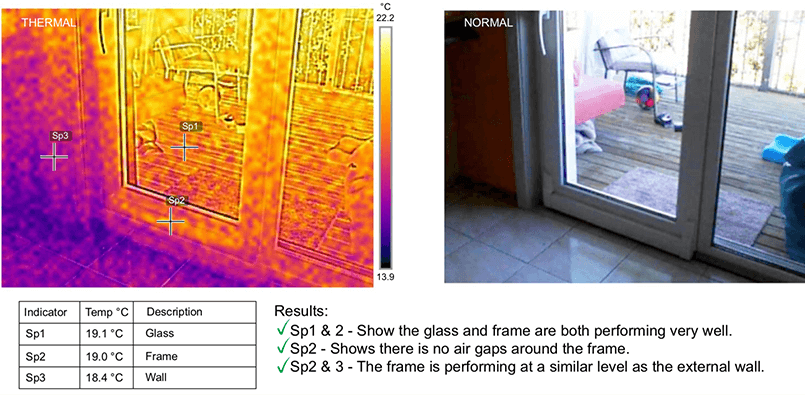
uPVC framed double glazed windows generally perform very well, with minimal heat transfer through the frames. Improved performance is achieved through the use of multiple locks in the frame and a rubber seal, preventing air gaps when the windows and doors are closed.
In some instances heat can also travel directly through the frame of the window. Non thermally broken aluminium framed windows are the worst performing product on the market. In general, Australia uses aluminium frames as a standard for windows. This is due to their quick assembly, low maintenance and high durability. However, a major disadvantage is the high thermal conductance, which means it can heat up very quickly and the heat can pass through the frame. For this reason, aluminium windows have higher u-values compared to uPVC and Timber frames.
ALUMINIUM FRAMES EXAMPLE
Hot External – Inferior Alu. Double Glazed Window
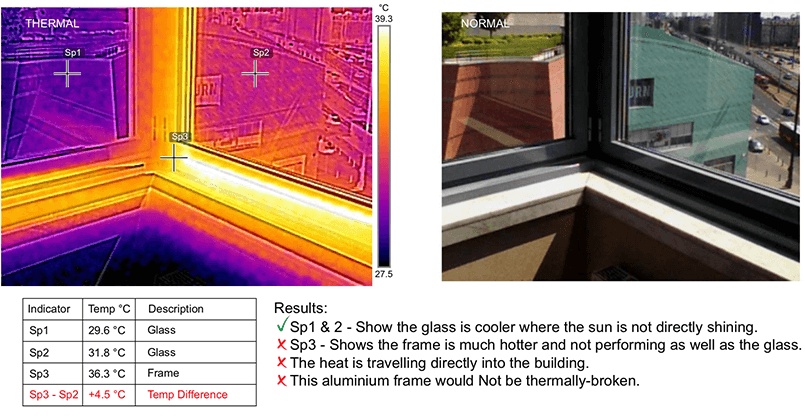
Hot External – Inferior Alu. Double Glazed Window
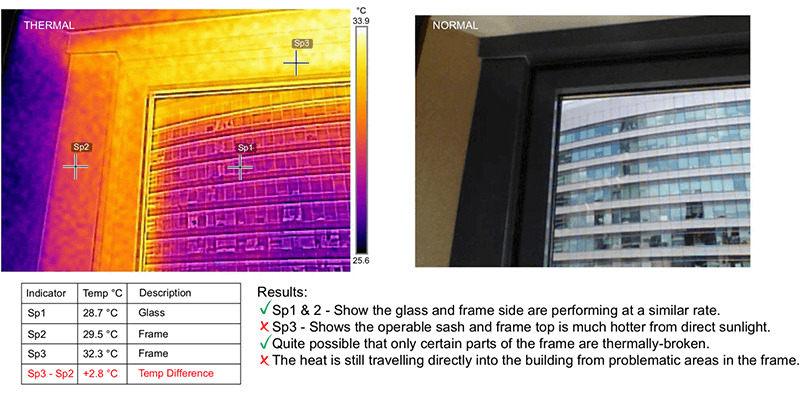
Oknalux offers thermally broken aluminium frames, which contain a PVC core to reduce the transfer of heat through the frame. The best thermally performing frame is timber, but the major disadvantages are with the continual maintenance and weathering issues over time. uPVC has very similar thermal properties as timber, but comes with no external maintenance or weathering issues. uPVC is our recommended frame type for performance and it also comes at lower price.




